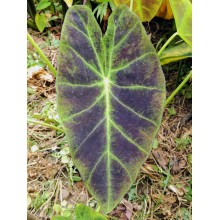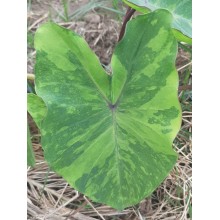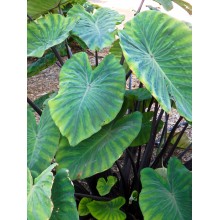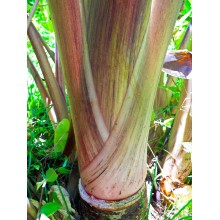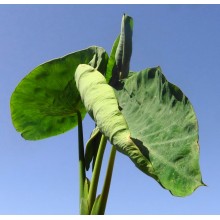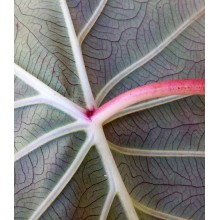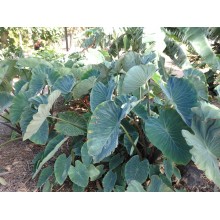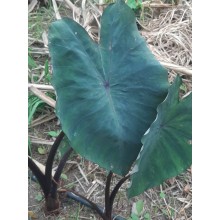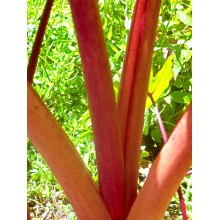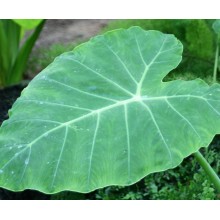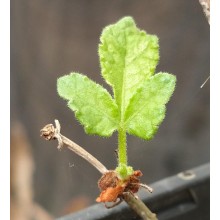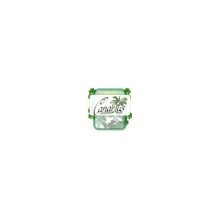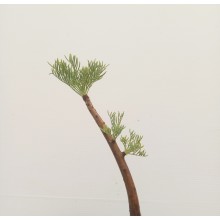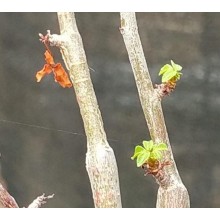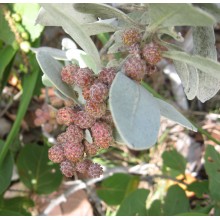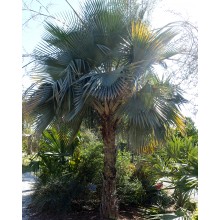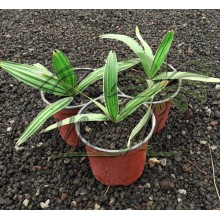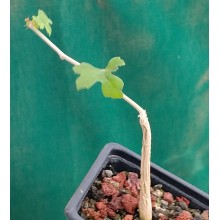Plantas generales Hay 1884 productos.

Si te gustan las plantas exóticas, acabas de llegar al lugar correcto. Canarius ofrece plantas exóticas difíciles de conseguir, que raramente se encuentran en tiendas de jardinería. Nuestra tienda tiene especies naturales, así como híbridos poco frecuentes. Ofrecemos plantas exóticas procedentes de las Islas Canarias.
Los pedidos se envían a cualquier lugar de Europa y también a todo el mundo. Los paquetes llegarán a su casa en pocos días después de ser enviados (tenga en cuenta que también necesitamos algunos días para el procesamiento). No dude en contactar con nosotros si tiene alguna pregunta.
Subcategorías
-
Suculentas
Los desiertos y las áreas secas son el hogar de las plantas más interesantes. Canarius ofrece una selección creciente de plantas suculentas de la máxima calidad, ya que han sido cultivadas al aire libre, bajo el pleno sol de las Islas Canarias.
Las suculentas o "plantas crasas" son especies que retienen agua, que están adaptadas a las condiciones de sequía. Estas plantas almacenan succum (jugo, agua) en sus hojas, tallos o raíces, y con frecuencia muestran un aspecto grueso y carnoso.
-
Exóticas
Las plantas exóticas son especies originarias de otras partes del mundo y que normalmente, tienen un carácter ornamental, una vegetación exuberante, con flores coloridas, formas inusuales... Aquí puede encontrar una gran variedad de plantas exóticas: desde bromelias y heliconias, hasta palmeras y plantas de interior.
Las plantas exóticas no tienen un uso específico. Los coleccionistas compran este tipo de plantas por su rareza, para decoración interior o exterior, en función de sus características. -
Frutales y Medicinales
Los árboles frutales, las hierbas y las plantas medicinales nos permiten mejorar nuestra salud y alimentación. En esta sección, cada tipo de planta tiene efectos saludables, tanto los frutales (Feijoa, piña, Fina de Jete...), como plantas para la salud, como Graviola, Aloe vera, Callisia fragrans...
En el metabolismo normal de todos seres vivos, el organismo produce algunas sustancias a partir de los nutrientes presentes en el entorno; algunos de estos químicos son parte del proceso en todo (o casi todo) tipo de especies. Normalmente, los componentes útiles están concentrados en algunas de sus partes: hojas, semillas, flores...
¡Encuentre su planta saludable y cómprela online!
-
Especiales
En canarius.com tratamos de ir más allá de los límites en el campo de la botánica. En nuestra tienda en línea tratamos de facilitar la compra de plantas de cualquier parte del mundo. Por eso, cultivamos desde las especies más comunes hasta las plantas más especiales, como podrá ver en esta sección.
-
Colocasia esculenta 'Illustris'
Colocasia esculenta 'Illustris'
Colocasia 'Illustris' is an old classic of tropical gardening. It produces very elegant narrow leaves with dark purple markings and thick veins. Its origin is unknown, but it was first described in 1873 as Alocasia illustris by the renown nurseryman William Bull, in England. A longer, more complete name would be Colocasia esculenta var. antiquorum...
22,00 € -
Colocasia esculenta 'Lime Aide'
Colocasia esculenta 'Lime Aide'
This cultivar of taro is highly ornamental because of an elegant pattern of greens shown on leaves.
34,40 € -
Colocasia esculenta 'Mana Ele Ele'
Colocasia esculenta 'Mana Ele Ele'
This Polynesian crop is also an incredible ornamental, with bold thick leaves and truly black leafstalks.
44,50 € -
Colocasia esculenta 'Manini 'Owali'
Colocasia esculenta 'Manini 'Owali'
Hawaiian taros are both traditional food and showy ornamentals. 'Manini Owali' has leaf stalks streaked in black and different colours. Leaves are green. Crop cycle is fastleaf stalks
32,30 € -
Colocasia esculenta 'Ñame Blanco' - Taro, Ñame
Colocasia esculenta 'Ñame Blanco' - Taro, Ñame
Taro is the edible corm of a spectacular plant that can be grown in damp soil or in the water. It has huge exotic foliage. This variety named Ñame Blanco is traditionally grown in the Canary Islands.
27,40 € -
Colocasia esculenta 'Pii Alii'
Colocasia esculenta 'Pii Alii'
This taro shows an unusual leaf shape, as the sides of each blade are curled upwards. It is quite productive; its corms have a reddish skin and harvest time is 8-12 months.
32,00 € -
Colocasia esculenta 'Pink China'
Colocasia esculenta 'Pink China'
This is said to be the cold-hardiest or one of the most resistant of all edible taros. It is also ornamental, with pinkcolour in the leaf petioles and main veins.
20,30 € -
Colocasia esculenta 'Pololu'
Colocasia esculenta 'Pololu'
Leaves are green, leaf stalks are matte, often tinged with a pinkish.brownish hue. It is used in polynesian cuisine to prepare a "fairly good poi".
35,50 € -
Colocasia esculenta 'Ula'ula Kumu'
Colocasia esculenta 'Ula'ula Kumu'
This is one of the most beautiful taros! Bright pink leaf stalks hold green leaves. Corms are used in traditional polynesian cuisine both for Poi and for Table use, steamed, baked, fried or boiled.
32,30 € -
Colocasia gigantea
Colocasia gigantea
Colocasia gigantea, also called giant elephant ear or Indian taro, is a 1.5–3 m tall herb with a large, fibrous, inedible corm, producing at its apex a whorl of large leaves.
32,00 € -
Commiphora boranensis
Commiphora boranensis
Fairly uncommon in cultivation, this mhyrr shrub to 6 m tall has pinnate leaves, often with 3 or 5 segments and dark, peeling bark with copper tones. Commiphora boranensis is native to in the desert or dry shrubland in Eastern Africa.
48,30 € -
Commiphora holtziana Sagalla
Commiphora holtziana Sagalla
This mhyrr grows as a shrub to small tree. Its flaking bark has an uncommon grey-blue colour, while its young branches are dark brown.
48,70 € -
Commiphora kraeuseliana
Commiphora kraeuseliana
Very elegant, short-growing mhyrr from open rocky areas in Northern Namibia, Commiphora kraeuseliana is a small deciduous shrub, densely and regularly branched.
94,60 € -
Copernicia hospita
Copernicia hospita
Copernicia is a palm which is endemic to Cuba.The fan-shaped leaves are 1.5 to 2 m wide and are wedge-shaped circular. They are divided into many rigid segments. The ends of the segments are slightly hanging.
42,20 € -
Copernicia rigida 15-20 cm - Cont. 14 cm - 3 years
Copernicia rigida 15-20 cm - Cont. 14 cm - 3 years
10-15 cm - Cont. 12 cm - 2 years. Unusual palm with wedge-shaped upright leaves. Copernicia rigida is native to Cental-Eastern Cuba, in serpentine savanna or scrub.Trunk is gray, up to 15 m (50 ft) tall with a dense compact crown of stiff, erect, wedge-sh
36,70 € -
Corallocarpus sp.
Corallocarpus sp.
Adenium somalense is one of the most beautiful caudiciform plants. It grows wild in Somalia and through the Rift Valley into Ethiopia, Kenya, and Tanzania. Depending on the area, its trunk can take different shapes from a fat shrub to a small tree (more than 4 m), differently from the similar species A. obesum whose caudex is mainly underground. The showy...
28,40 €
En estos momentos tenemos pocos productos en esta categoría Plantas generales




















